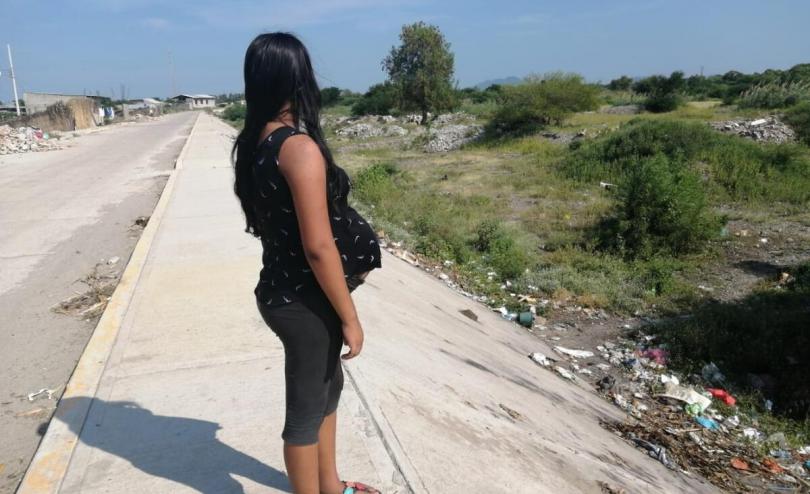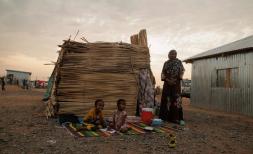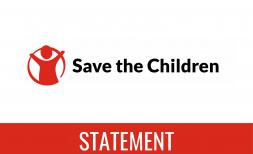COVID-19 places half a million more girls at risk of child marriage in 2020

- Save the Children analysis reveals a further 2.5 million girls at risk of marriage by 2025 because of the pandemic—the greatest surge in child marriage rates in 25 years
- As many as one million more girls at risk of becoming pregnant this year alone—with childbirth the leading cause of death among 15-19-year olds;
- South Asia expected to be hardest hit, with nearly 200,000 more girls at risk of child marriage in 2020.
An estimated 500,000 more girls risk being forced into child marriage and as many as one million more are expected to become pregnant in 2020 as a result of the economic impacts of the COVID-19 pandemic, new analysis from Save the Children reveals—a year-over-year increase of four and three per cent, respectively.
The increase comes on top of the previous estimated rates of child marriage, which already anticipated 12 million girls being forced into marriage this year. While this increase represents a conservative estimate, it marks a significant surge in child marriage rates with an expected spike in teenage pregnancies and school dropouts to follow. The increase is set to reverse 25 years of progress, which saw child marriage rates decline.
Up to 2.5 million additional girls are expected to marry over the next five years. Together with the 58.4 million child marriages taking place on average every five years, this amounts to a staggering 61 million child marriages by 2025*.
Girls in South Asia are disproportionately impacted by the risk of increased child marriage this year (191,000), followed by West and Central Africa (90,000), and Latin America and the Caribbean (73,400). The practice is also expected to rise in East Asia and the Pacific (61,000), Europe and Central Asia (37,200), and the Middle East and North Africa (14,400).
The risk of adolescent pregnancy in 2020 is highest for girls in East and Southern Africa (282,000), followed by West and Central Africa (260,000) and Latin America and the Caribbean (181,000).
In its new report Global Girlhood 2020: COVID-19 and progress in peril, Save the Children analysed the impact of COVID-19 on gender equality, revealing its devastating effects.
“The pandemic means more families are being pushed into poverty, forcing many girls to work to support their families, to go without food, to become the main caregivers for sick family members, and to drop out of school—with far less of a chance than boys of ever returning,” said Inger Ashing, CEO of Save the Children International.
“A growing risk of violence and sexual exploitation combined with growing food and economic insecurity—especially in humanitarian emergencies—also means many parents feel they have little alternative but to force their girls to marry men who are often much older. These marriages violate girls’ rights and leave them at increased risk of depression, lifelong violence, disabilities, and even death—including from childbirth, given their bodies simply aren’t ready to bear children.
“Every year, around 12 million girls are married, two million before their 15th birthday. Half a million more girls are now at risk of this gender-based violence this year alone—and these only are the ones we know about. We believe this is the tip of the iceberg.”
The report also shows that:
- 78.6 million child marriages have been prevented over the last 25 years but even before the coronavirus, progress to end the practice had slowed to a halt.
- Although data is limited, girls affected by humanitarian crises—like wars, floods, droughts, earthquakes, and disease outbreaks—face the greatest risks of child marriage. Nine of the ten countries with the highest rates of child marriage are considered fragile states.
- COVID-19 school closures have interrupted education for 1.6 billion children and experience during the Ebola outbreak suggests many girls will never return due to increasing pressure to work, risk of child marriage, bans on pregnant girls attending school and lost contact with education. Risks are especially high for girls without distance learning options.
- Gender-based violence was a pandemic long before COVID-19, with an estimated one in 10 girls globally having experienced rape or sexual violence from a current or former boyfriend or husband. The coronavirus has now led to increased reports of gender-based violence around the world.
- The UN expects an additional two million cases of female genital mutilation (FGM) to take place over the next 10 years as a result of the pandemic, mostly affecting girls under 14 years.
Sunita**, 16, from India’s Bihar state, was forced to marry and leave school at the age of 12. She now advocates against child marriage in her village, participating in community events to raise awareness of girls' rights.
She said: "I was told that some relatives were visiting. That’s when I found out my marriage had been arranged. I felt really terrible because I was still very young and was attending school with my friends. All my dreams were shattered in that moment.
"My message to all girls my age would be to delay your marriage and do whatever it takes to fulfil your dreams."
Ms. Ashing adds: “There’s no doubt the pandemic has made existing gender inequalities worse and risks reversing hard-won progress made over the last few decades. We cannot, and must not, let things spiral even further.
“It’s time for world leaders to come together to protect a generation of girls so they don’t miss out on the life-changing opportunities they’re just as entitled to as boys, including education. Girls must have a seat at any decision-making table that involves their rights so they can design the future they choose.”
Save the Children runs programmes and is campaigning to address the growing risk of gender-based violence against girls, including child marriage, while supporting girls’ rights to education, health and empowerment so they can participate in decision-making from the community to the global level.
As world leaders prepare to meet at the UN General Assembly in New York today to make commitments to speed up progress for gender inequality on the 25th anniversary of the Beijing Women’s Conference—which, in 1995, led all governments to commit to a ‘Platform for Action’ to achieve equality for women and girls—Save the Children is calling on them to:
- Raise girls’ voices by supporting their right to safe and meaningful participation in all public decision-making through the COVID-19 response, recovery and beyond. This includes putting adolescent girls at the centre of the Beijing+25 and Generation Equality decision-making and accountability processes.
- Act to address immediate and ongoing risks of gender-based violence: recognise that child protection workers and those who address gender-based violence provide ‘essential services’; strengthen protective systems; act on the UN Secretary-General’s global ceasefire on domestic violence; and continue to implement transformative programming to address the root causes of gender-based violence.
- End child marriage and support girls who are already married to realise their rights—through law reform; national action plans that span various sectors like health, education, etc.; and working with communities to build support to change harmful gender norms that cause gender-based violence, including child marriage.
- Invest in girls now with new, not repackaged, investments to prevent the worst outcomes of COVID-19 for girls, and to enable progress and lasting change.
- Count every girl with improved data collection to put the girls who have been pushed furthest behind first, particularly in humanitarian contexts. This includes disaggregating data by sex, age-group and disability; conducting and building on analysis that looks at how gender and other identities—like class, race and disability—affect girls; and ensuring existing databases on child marriage, including child marriage in humanitarian contexts, fill this critical data gap in accountability to girls.
To support Save the Children’s global COVID-19 emergency appeal, click here.
Notes to editors:
- *Assumes the baseline level of 12 million child marriages a year remains constant.
- **Name changed to protect the child’s identity
- The new projections on increasing risk of child marriage and adolescent pregnancy are based on the known correlation between child marriage and poverty and adolescent pregnancy and poverty. We took new World Bank estimates on the economic impact of COVID-19 expected in 2020 and used the known rate of child marriage and adolescent pregnancy among different wealth quintiles to see how the economic downturn would change the number of girls in each wealth quintile then applied the current rates of child marriage and adolescent pregnancy to those new numbers.
- The number of marriages averted since 1995 was calculated based on the rate of marriage in 1995 and the assumption that this rate would have remained the same as populations grew over the next 25 years. The difference between the number that would have been reached had rates remained the same and the actual number of marriages that have occurred were counted as ‘marriages averted’.
- Content available from Sunita* from India, Clara* from Mexico, Tatu* and Subira* from Tanzania.
- Read The Global Girlhood Report 2020: How COVID-19 is putting progress in peril here.
For more information, or to arrange an interview, please contact:
Natasha Dos Santos (in London)
natasha.dossantos@savethechildren.org
+44 7787 191957
Randa Ghazy
r.ghazy@savethechildren.org.uk
+44 7429 980 655




